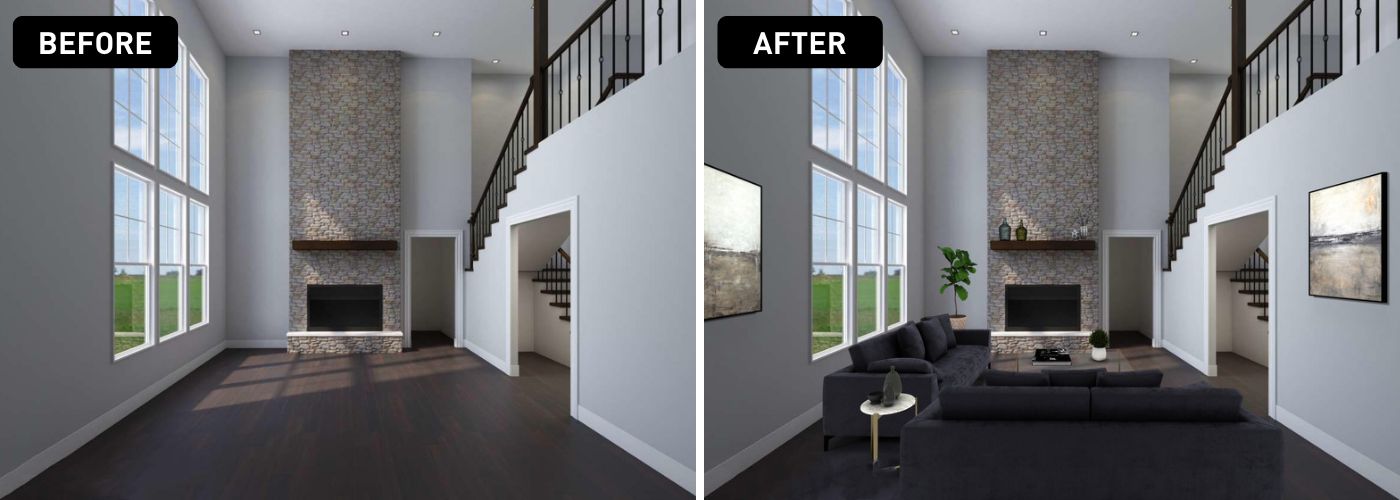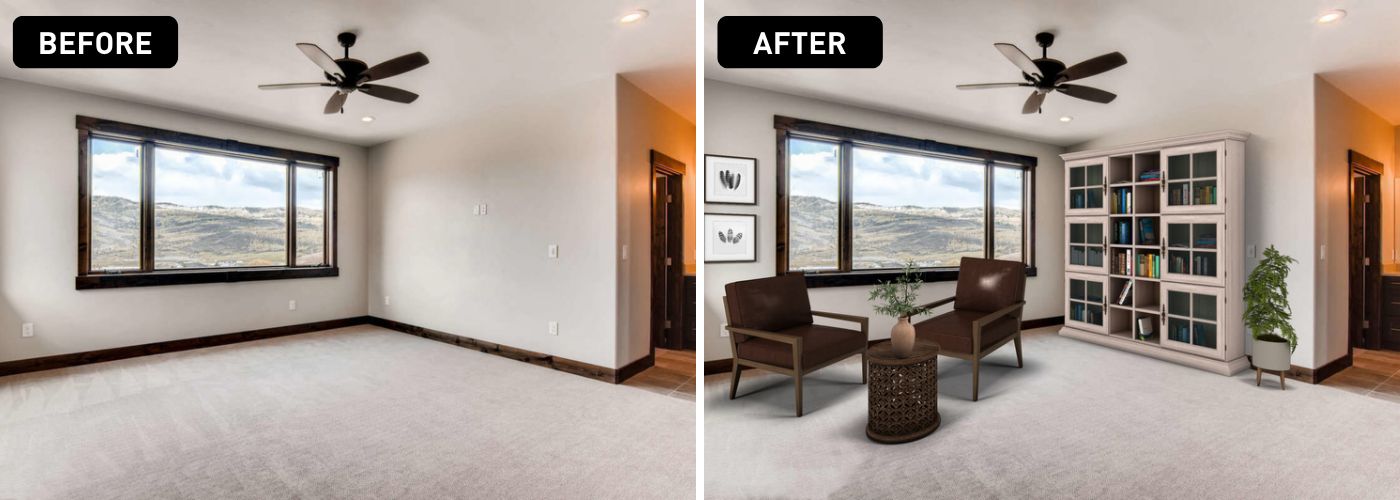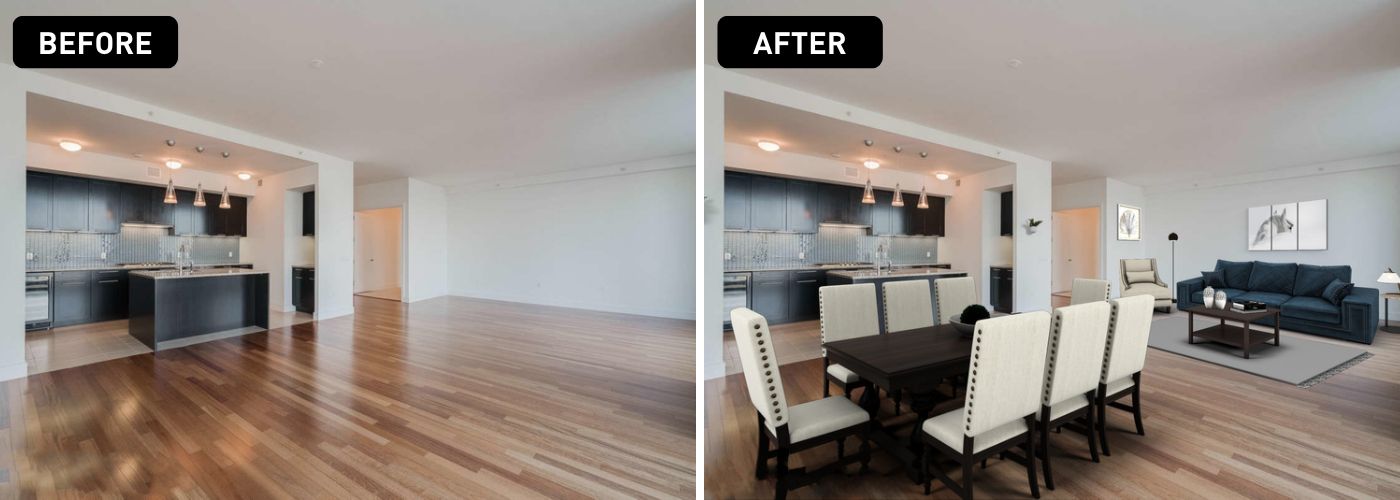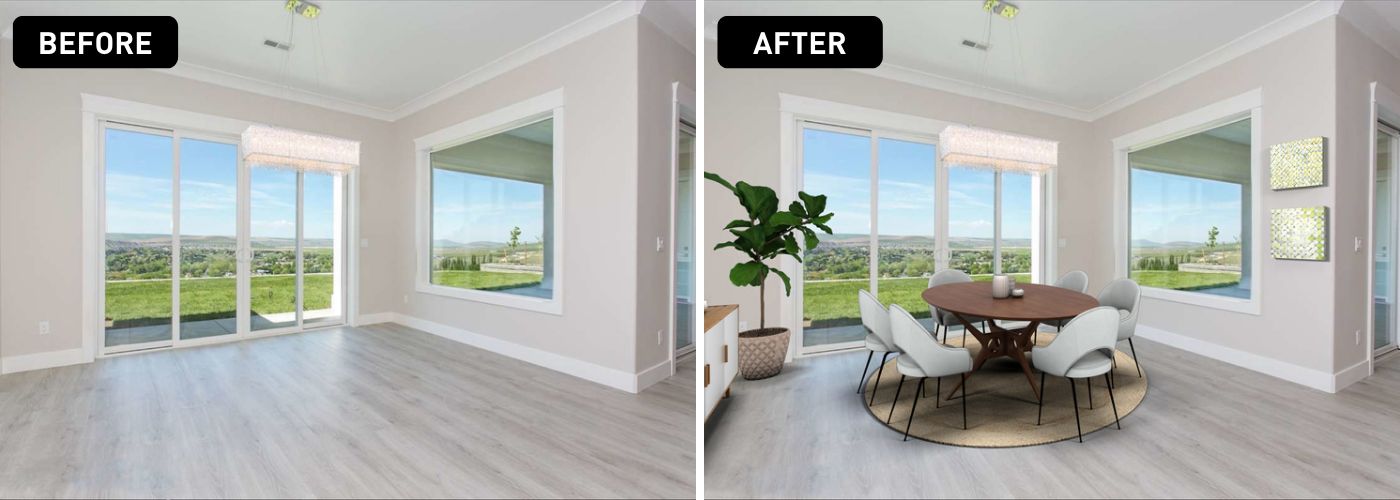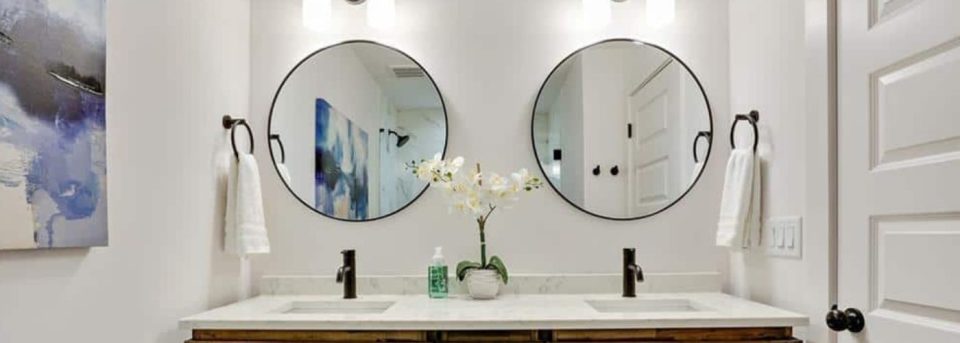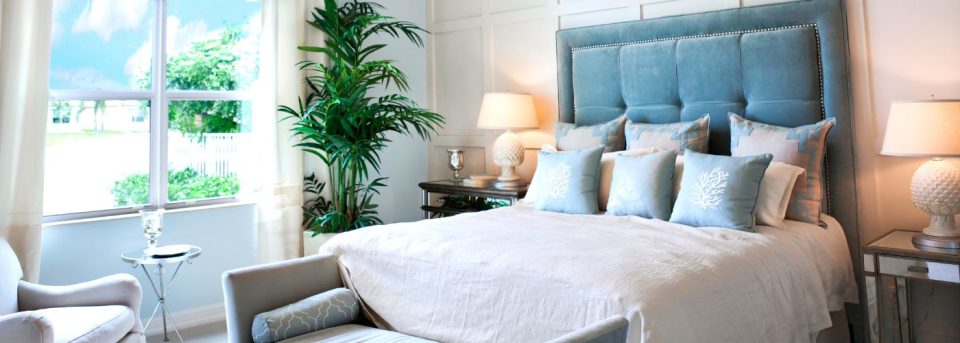Should I Get Virtual Home Staging?
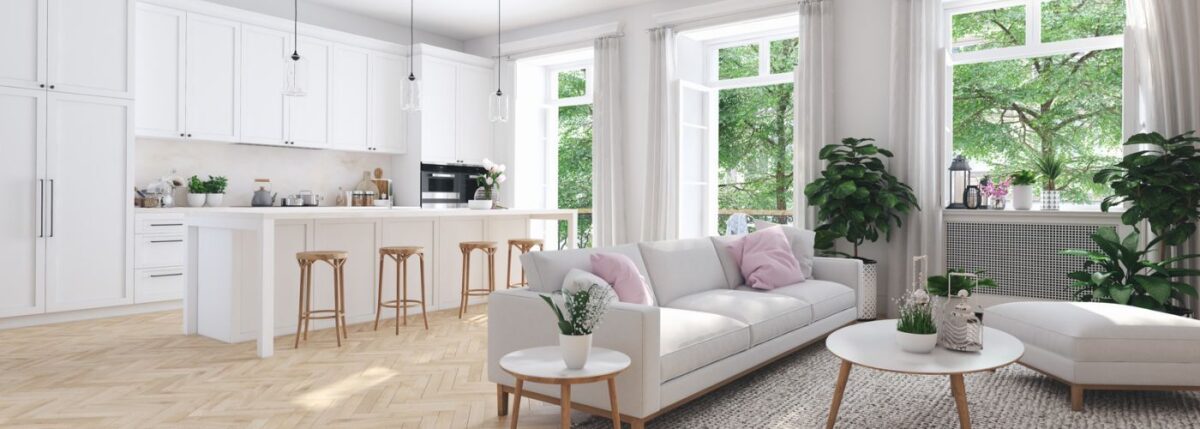
As the real estate market continues to evolve, virtual home staging has become a popular way to make a house look its best in photos and videos. Homeowners considering selling their property have to ask: is virtual home staging worth it? Virtual home staging can be more cost-effective than traditional staging, but it’s important to weigh the pros and cons before making the decision.
What Is Virtual Home Staging?
Virtual home staging is becoming increasingly popular in the real estate industry, thanks to advancements in technology. It involves using digital tools to create a visually appealing and livable environment within an empty or sparsely furnished space.
Through virtual staging, potential buyers can visualize themselves living in the home and get a sense of how their furniture would fit into each room.
Virtual home staging also helps sellers save money on traditional home staging costs by eliminating the need for movers, designers, and rental furniture expenses.
Instead, sellers can work with a virtual stager who utilizes software to add furnishings and decor elements digitally. This allows for greater flexibility as changes can be made quickly and easily without having to move physical objects around.
Another advantage of virtual home staging is that it offers unlimited design options for showcasing a property’s potential.
Does Virtual Staging Help Sell A House?
When it comes to selling a house, staging is an essential element that can make or break the deal. In recent years, virtual staging has become increasingly popular among real estate agents and sellers.
Virtual staging involves using computer-generated images of furniture and decor to create a visual representation of what a space could look like when furnished. It offers several benefits over traditional home staging. For one, it’s more cost-effective since there are no physical items to purchase or rent.
Additionally, virtual staging allows for much greater flexibility in terms of design choices since any type of furniture or interior design can be added without having to worry about size, style or color coordination.
It’s also much quicker than traditional staging since the images can be created and uploaded within days rather than weeks. However, the question remains: does virtual staging actually help sell a house?
Is Virtual Staging Unethical?
Virtual staging is a relatively new concept in the real estate industry. While this might seem like a harmless marketing tool, some have raised ethical concerns.
One argument against virtual staging is that it can be misleading, giving potential buyers unrealistic expectations about the size and layout of a property. For instance, furniture placement can make a small room appear larger or highlight certain features that may not actually be as prominent in reality.
This could lead to disappointment and frustration for buyers who fall in love with the staged version of a property only to find out it doesn’t match their expectations. Another concern is that virtual staging could be seen as deceptive advertising.
One way to prevent any issues is by seeing the home in person first before deciding on it.
What Should You Not Do When Virtually Staging A House?
Virtual staging has become an increasingly popular method for showcasing a house in the real estate industry. However, when virtually staging a house, there are some things that should not be done.
Firstly, it is important not to overdo it with virtual furnishings. Although the aim is to give potential buyers an idea of what their future home could look like, too much virtual furniture can make the space appear cluttered and cramped. It’s best to visualize your furniture staging to make sure everything works together to compliment your home.
Secondly, do not forget about lighting when virtually staging a house. Lighting can make or break a room’s appearance, so ensure that all areas are well-lit and have proper lighting fixtures installed.
Thirdly, avoid using outdated or low-quality images for virtual staging as this can negatively impact the overall presentation of the property.

